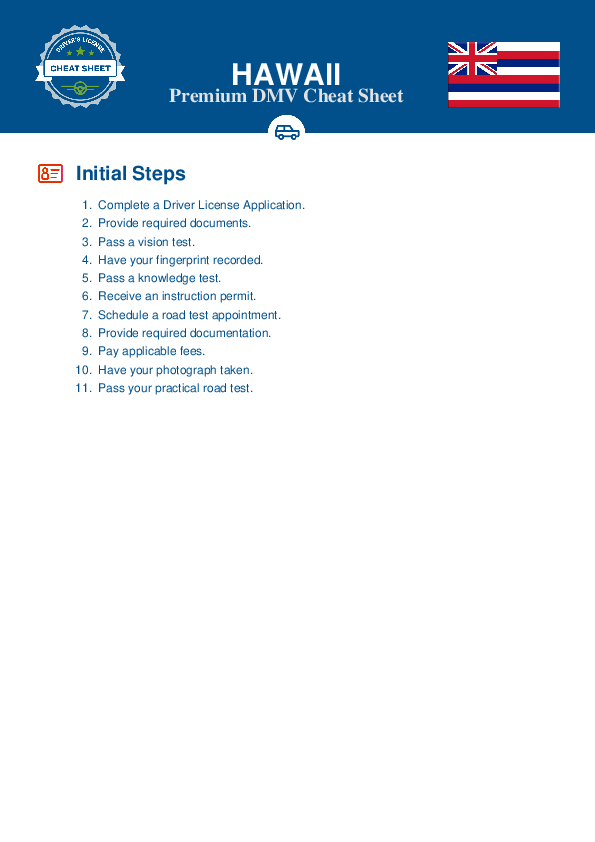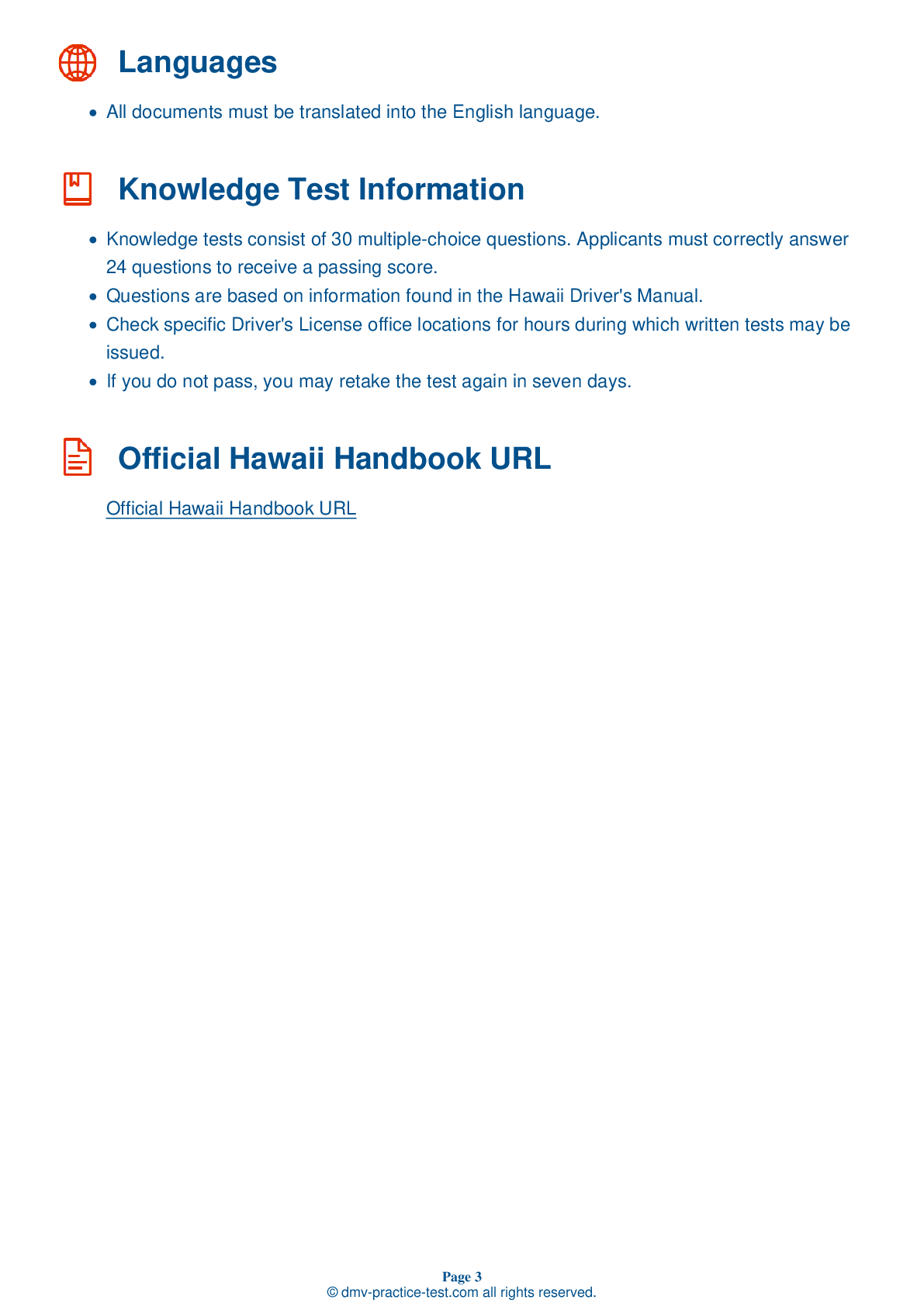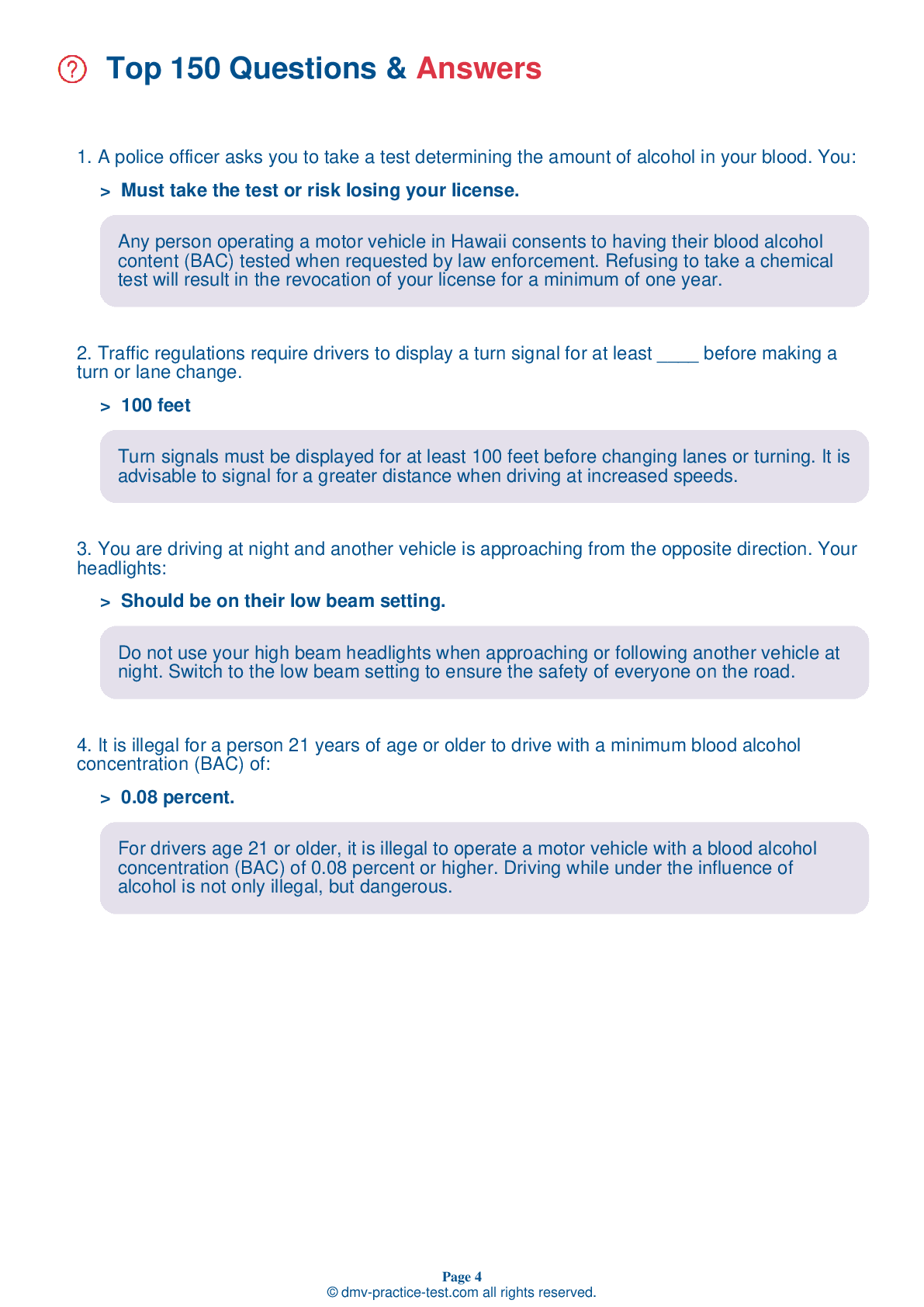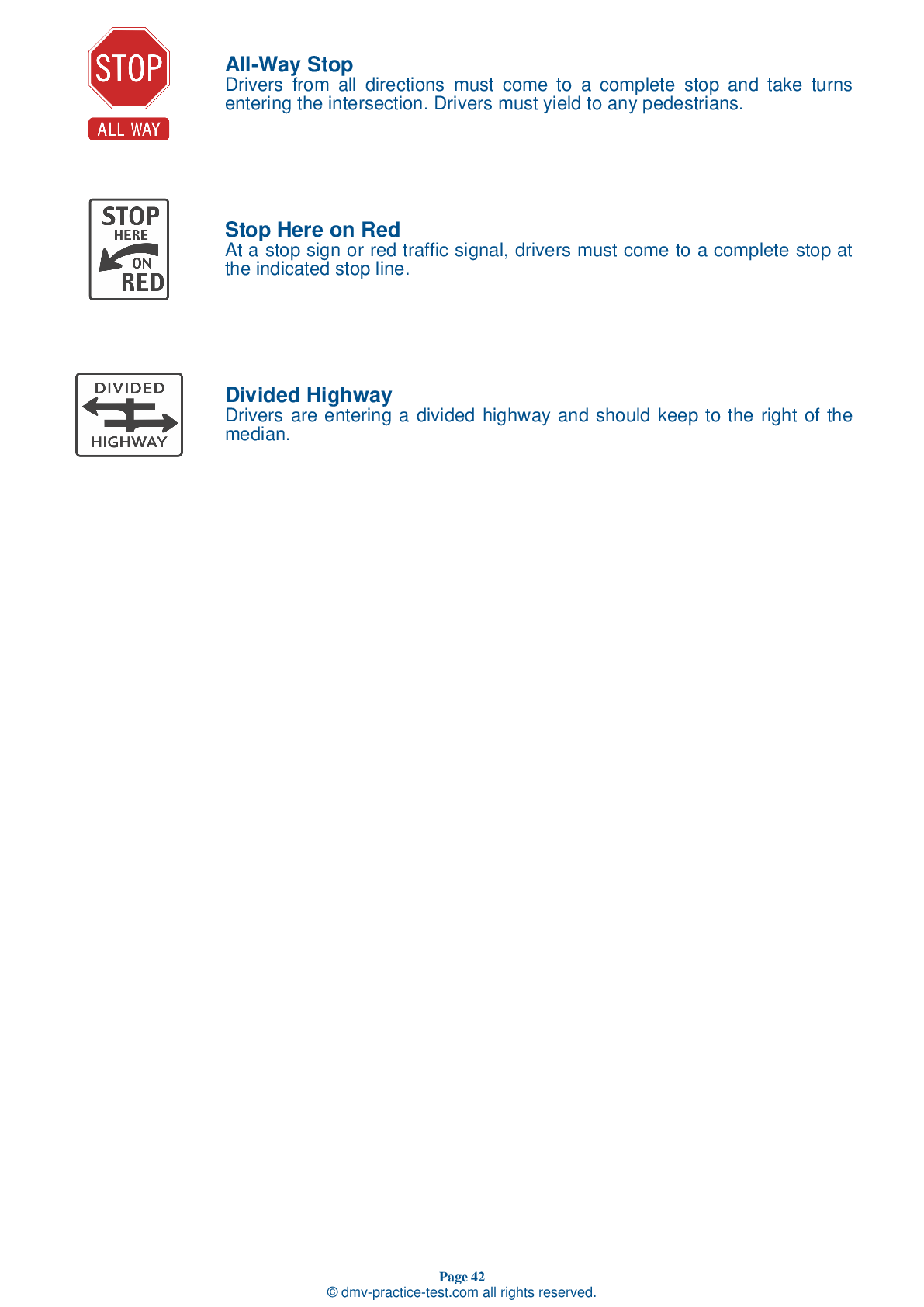FREE Hawaii DMV Practice Test | Driving License Permit test Hawaii 2025 #8
This set of practise tests for the Hawaii DMV has been updated for January 2025. It includes questions based on the most important traffic signs and legislation for 2025 from the Hawaii Driver Handbook. To study for the DMV driving permit test and driver's licence exam, use actual questions that are very similar (often identical!) to the DMV driving permit test and driver's licence exam.
Each question on the practise exam has a tip and explanation to help you recall the ideas. Questions about traffic rules, traffic signs, and driving statutes, as well as information from the Driver Handbook, will be included in the written portion of the official DMV test.
You must properly answer 24 of the 30 questions to receive a passing mark. To help you prepare for your Hawaii instruction permit or driver's licence, take our DMV practise test.
The DMV exam is offered in a variety of languages.
Using any form of testing help will result in an automatic fail, and the DMV may take further action against your driver's licence, so avoid it.
1 . You may not cross a single broken white or yellow line:
You may cross a single broken line to pass or change lanes as long as you can do so safely and without interfering with traffic.
2 . The “No zone” is:
A truck or bus has blind spots on each side, in the rear, and in the front. An automobile cannot be seen in these blind spots. These blind spots are referred to as the “No zone.”
3 . What should you do if your vehicle’s right wheels leave the pavement?
If your vehicle’s right wheels leave the pavement, don't panic. Take your foot off the accelerator and steer parallel to the road. Slow down and ease back onto the roadway by keeping both hands on the steering wheel and steering into the road’s right lane with a small turn of the steering wheel. Check for traffic around you before steering back onto the pavement.
4 . You should honk your horn when you:
Your horn should be used as a warning in situations where you think another driver or a pedestrian does not see you. For example, if a child begins to run into the street in front of your vehicle, you should sound your horn.
5 . As you near an intersection, the traffic light changes from green to yellow. Your best action is to:
A steady yellow traffic light indicates that the light will soon change to red. You should be prepared to stop for the red light, if it is safe to do so.
6 . A red arrow displayed on a traffic light means that:
Unless a posted sign indicates otherwise, a traffic signal displaying a red arrow means that drivers must come to a full stop and remain stopped until a green light or green arrow appears.
Need Car Insurance? No problem!
Compare the best rates in Hawaii and find a personalized policy that meets your needs.
1. Are You Currently insured ?
2. Married ?
3. Do you own your Home?
4. Do you have more than 1 car ?
5. Have you or a Family Member Honorably Served in U.S. Military ?
6. Your Name
7. Age
8. Zip code
IMPORTANT REMINDER:Auto Insurance is Mandatory to drive in Hawaii. Get covered before you hit the road to avoid any fines.
Ranked by best match
2025 Hawaii | Frequently Asked Questions
1. Be at least 15 1/2 years old.
2. Complete a state-approved driver's education course and receive a Certificate of Completion.
3. Visit the local DMV with a parent or guardian.
4. Bring necessary documents: proof of identity, proof of legal presence, social security number, and two proofs of Hawaii residency.
5. Pass the written knowledge test.
6. Pay the required fee.



